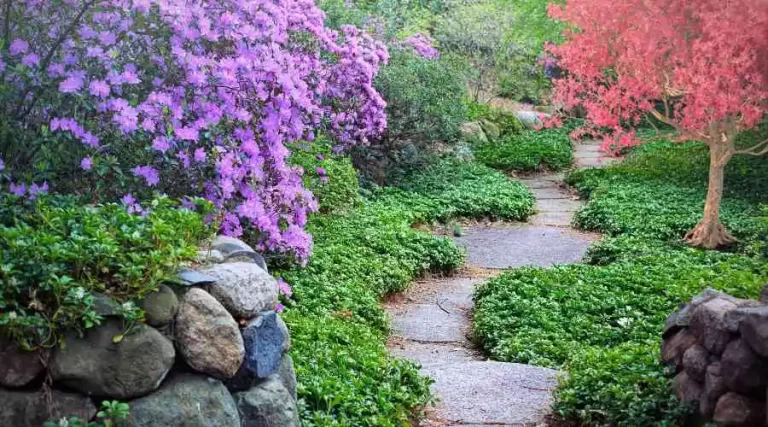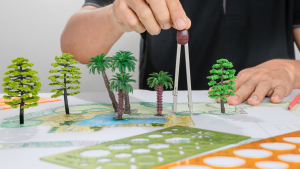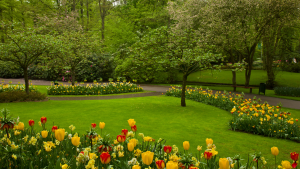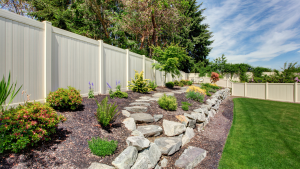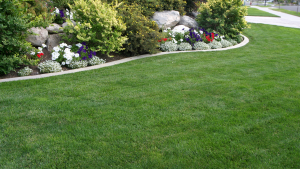Coneflowers, black-eyed Susans, and other common perennials in your landscaping have become boring. Why not design a bog garden? They are simple to install. The nine methods outlined in this article might help you create a backyard bog garden.
In a bog garden, certain plants’ crowns and top growth stay high and dry while the roots spend their whole lives in an acidic, spongy environment. As plants deteriorate in the bog garden, they sink and create acidic peat with a low pH. One of the items derived from the peat is peat moss.
You’ve grown Tired of coneflowers, black-eyed Susans, and other common perennials in your garden? Why not develop an easy-to-install bog garden? The steps are outlined in this article.
Of creating a bog garden in your yard.
In a bog garden, what do you grow? Vegetation that enjoys damp earth. Bog gardens are also ideal for growing carnivorous plants, which consume insects.
Step 1: Select a location for your bog garden.
A bog garden may be any flat spot in the landscape that receives full daylight or a daily minimum of six hours in the sun.
Avoid regions where there are a lot of tree roots. Gullies, drainage ditches, low locations, and the bottom of a hill are terrific places to start.
A moist place will also work, although it is not required.
Step 2: Establish the dimensions and design of your bog garden.
A bog garden might be 2 to 3 feet deep. This depth enables future root development in plants. Plant development will be hampered if the soil is too shallow. It may be as long and broad as you desire (and have the stamina to dig).
The bog garden may take any form you like. It may be long and thin, rounded, half-moon-shaped, or whatever looks beautiful in the environment. You want the bog garden to blend in with your current landscape design.
A beginner’s bog garden should be roughly 16 square feet (4 feet long by 4 feet broad). Keep in mind that a little bog garden will rapidly dry up, which will increase care since it will need to be irrigated.
Step 3: Dig the bog garden
Dig the bog garden using a sharp shovel or spade. Place the excavated earth on a tarp or something similar while you dig. Later, some of this soil will be used in the process.
Step 4: Line the bog garden
To line the bog garden, use a high-quality pool or pond liner. It is preferable to have the sheets in one piece. Liner sheet seams or overlapping portions will leak.
The liner should reach approximately 12 inches beyond the border of the excavation area. While working in the excavated space, secure this sheet extension with bricks or rocks. Once the soil mix is added, the liner can settle and shape to the bottom of the bog garden.
In the pool liner, make 3 inch drainage holes with a punch or drill. About 12 inches below the top border of the bog garden. This enables the drainage of excess, such as following a downpour, while keeping the bog garden’s base moist.
Step 5: Add planting medium to your bog garden.
Yes, that’s a technical term, but in this case, the planting medium isn’t soil. A standard bog garden mixture includes 30% coarse sand and 70% peat moss, compost, and hole-dug soil.
On a tarp or similar surface, thoroughly mix the planting medium. Layer the bog garden mix in 6-inch-deep layers at a time. Tamp down the first two layers gently, ensuring the mix makes excellent contact with the liner’s bottom. Smooth each layer to ensure a uniform distribution around the bog garden hole.
Step 6: Soak the planting medium
Rainwater is preferable, although tap water may also be utilized. Fill your bog garden with water to soak the mix. After watering, wait a month before planting in your bog garden. Why? You want to ensure that the mixture settles. Wait at least a week if you’re too thrilled.
Step 7: Choose the plants for your bog garden.
While you wait for the planting medium to settle, you can look for the best bog garden plants. Moisture-loving perennials that can withstand bog garden conditions – damp roots and acidic, low-nutrient medium – are ideal. Many native plants meet this requirement.
Choose bog plants with a variety of shapes and textures that can withstand the acidity of the water. Look for plants that bloom in various seasons, such as spring, summer, and autumn. Plants suitable for your environment and the USDA hardiness zone are preferred.
Sedges, marsh marigolds, and sundews are common bog garden plants. Bug-eating plants that flourish in bog gardens include the Venus flytrap and pitcher plants. Carnivorous plants may motivate your children (and you) to study more about plants, gardening, and horticulture.
Step 8: Plant your bog garden
Like any other garden bed, tall plants should be planted at the rear of your bog garden if it is mainly visible from the front. Tall plants should be placed in the middle of your bog garden if they can be viewed from all sides.
Plant-related plants in groups of three or more for the optimum aesthetic effect.
Step 9: How to care for a bog garden
It is really simple to maintain your bog garden. You need to keep your bog garden moist. During protracted dry seasons, a bog garden must be irrigated. You don’t want the bog garden to get drier.
Dead flowers may be removed from plants to clean them up as well, however
unnecessary.
Bog gardens are naturally deficient in nutrients. Thus, they do not need fertilization. The decaying plants that reach the lowest area of the bog garden will provide the nutrients that plants need.
Mulch your bog garden with shredded leaves, straw, or other organic materials.
Waste in cold areas to protect sensitive plants. In the spring, you may remove the mulch, or leave it alone if just a thin layer remains. The mulch decomposes and finally settles to the base.
FAQ regarding bog gardens
What kind of wildlife can you expect to see in your bog garden?
Frogs, dragonflies, snakes, and small animals will flock to your bog garden. Flowers attract pollinators such as butterflies, bees, hummingbirds, and other insects.
Does feeding the carnivorous plants require catching insects?
No. The bugs are drawn to the plants by nature.
How do you care for plants when you have to walk into a bog garden bed over 5 feet wide?
If you can’t reach the plants from the bog garden’s edge, build a path to them using a stepping stone.
When to call a landscaping pro
What if you want to make a bog garden but need more time or energy? Hire a landscaping professional to do the grunt work for you.

